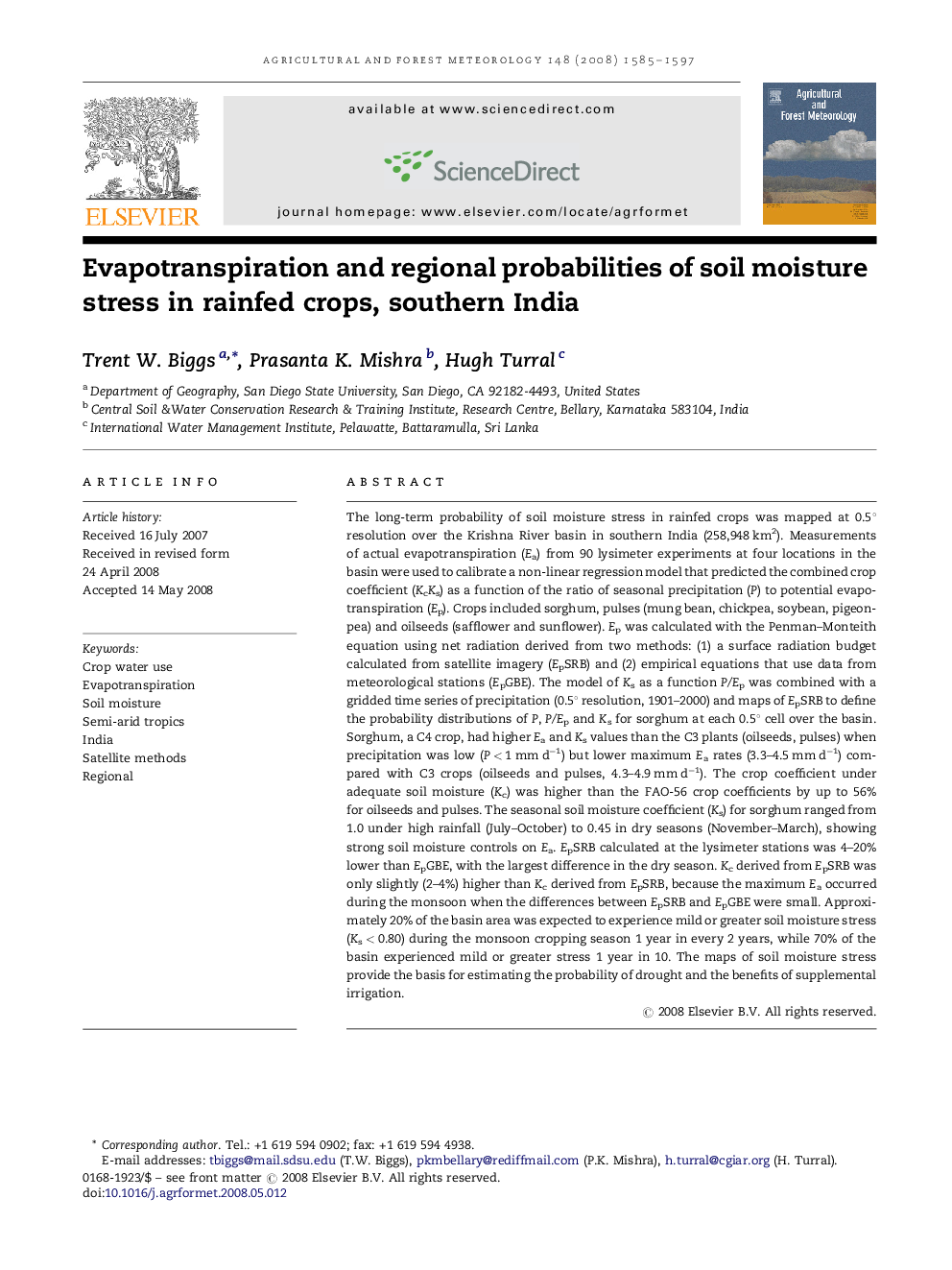| کد مقاله | کد نشریه | سال انتشار | مقاله انگلیسی | نسخه تمام متن |
|---|---|---|---|---|
| 82585 | 158403 | 2008 | 13 صفحه PDF | دانلود رایگان |

The long-term probability of soil moisture stress in rainfed crops was mapped at 0.5° resolution over the Krishna River basin in southern India (258,948 km2). Measurements of actual evapotranspiration (Ea) from 90 lysimeter experiments at four locations in the basin were used to calibrate a non-linear regression model that predicted the combined crop coefficient (KcKs) as a function of the ratio of seasonal precipitation (P) to potential evapotranspiration (Ep). Crops included sorghum, pulses (mung bean, chickpea, soybean, pigeonpea) and oilseeds (safflower and sunflower). Ep was calculated with the Penman–Monteith equation using net radiation derived from two methods: (1) a surface radiation budget calculated from satellite imagery (EpSRB) and (2) empirical equations that use data from meteorological stations (EpGBE). The model of Ks as a function P/Ep was combined with a gridded time series of precipitation (0.5° resolution, 1901–2000) and maps of EpSRB to define the probability distributions of P, P/Ep and Ks for sorghum at each 0.5° cell over the basin. Sorghum, a C4 crop, had higher Ea and Ks values than the C3 plants (oilseeds, pulses) when precipitation was low (P < 1 mm d−1) but lower maximum Ea rates (3.3–4.5 mm d−1) compared with C3 crops (oilseeds and pulses, 4.3–4.9 mm d−1). The crop coefficient under adequate soil moisture (Kc) was higher than the FAO-56 crop coefficients by up to 56% for oilseeds and pulses. The seasonal soil moisture coefficient (Ks) for sorghum ranged from 1.0 under high rainfall (July–October) to 0.45 in dry seasons (November–March), showing strong soil moisture controls on Ea. EpSRB calculated at the lysimeter stations was 4–20% lower than EpGBE, with the largest difference in the dry season. Kc derived from EpSRB was only slightly (2–4%) higher than Kc derived from EpSRB, because the maximum Ea occurred during the monsoon when the differences between EpSRB and EpGBE were small. Approximately 20% of the basin area was expected to experience mild or greater soil moisture stress (Ks < 0.80) during the monsoon cropping season 1 year in every 2 years, while 70% of the basin experienced mild or greater stress 1 year in 10. The maps of soil moisture stress provide the basis for estimating the probability of drought and the benefits of supplemental irrigation.
Journal: Agricultural and Forest Meteorology - Volume 148, Issue 10, 3 September 2008, Pages 1585–1597